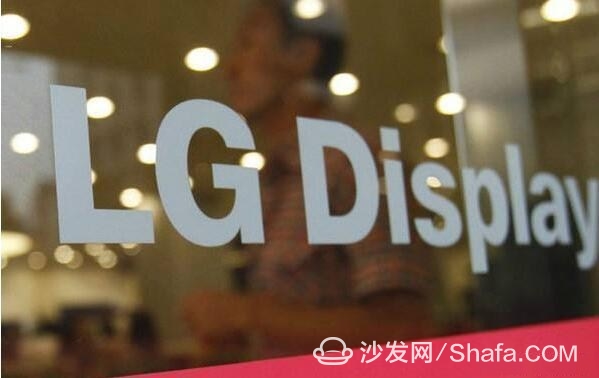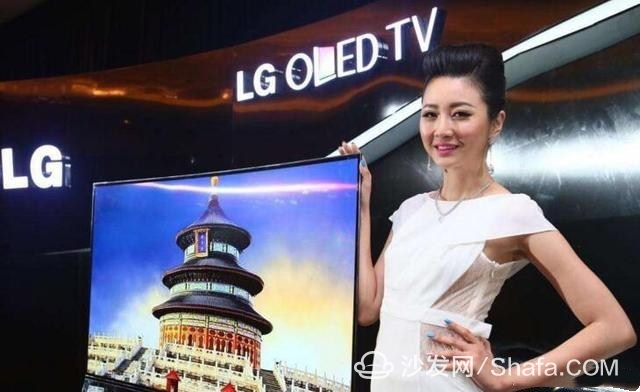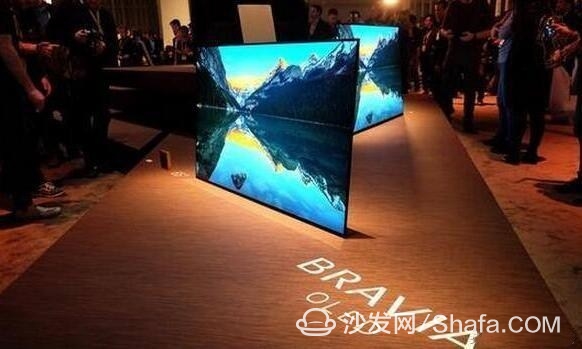OLEDs saw the industry's hope of replacing LCDs a few years ago. However, due to the strong monopoly of LGD to the upper reaches, LGD has not been able to meet the end-use requirements and the scale has not been able to meet the end-user demand. At the same time, LCD technology continues to improve, even if Sony joins today, if LGD Strong still, it will inevitably lead to future outcomes.

Strong monopoly upstream is not a good thing
Should be swiftly whipping but dreaming of monopolyIf there is no demand in the market for a while, how long can technology reserves be? However, once market demand erupts, new technologies should achieve rapid volume production. This is the so-called opportunity!
TV industry development for decades, no lack of good technology eventually become the industry's mainstream case, there is no lack of good technology eventually helpless defeat case. Market performance and technology can not be directly equated, but related to technology, marketing, upstream and downstream promotion, as well as consumer demand and many other aspects, relying on one side can not succeed.
Is OLED a good technology? The answer is yes! But is OLED one of the hard-to-promote technologies? The answer is yes!
Before 2008 or even earlier, in fact, the technology reserves and research in large-size OLEDs, the leading manufacturer is Samsung Display, rather than LGD, which is the consensus of many technical researchers on DisplaySearch upstream technical seminars. As for Samsung's later suspension of research on large-size OLEDs, it is undoubtedly that its technology has fatal flaws that cannot achieve rapid mass production.
The LGD insisted that these years have indeed made great progress, surpassing Samsung to become the king of the large-size OLED field. However, since its closest partner, Skyworth, has been pushing new OLED TVs for a few years without forming a momentum, LGD's OLED panel mass production conditions still have certain doubts.

LG OLED TV
Looking at the latest statistics, LGD has set a target of 1.8 million OLED TV panels for 2017, which will double in comparison to the 900,000 tablets in 2016. It is observed that LGD expects its OLED TV panel business to officially turn a profit in 2019. Prior to this, it plans to achieve 2.5 million shipments of OLED TV panels by 2018, which will increase the size and quality of OLED TVs. In the three directions of design differentiation, the company has expanded its supply of OLED TV panels to TV makers other than Lejin Electronics.
Think about it, LGD, which occupies an absolute monopoly position (over 90%) of OLED panel resources, only produced 900,000 panels in 2016, which is negligible compared to the annual shipment of over 200 million color TV sets. It can be imagined that the former proportion is even more miserable.

Thin, the most obvious feature of OLED
Even according to their own claims of 1.8 million pieces in 2017, and 2.5 million pieces in 2018. The overall shipment volume of color TVs is still a matter of one count. It is said that such technologies can become mainstream and it is difficult for the market to be convinced.
As the largest promoter of OLED, LGD has no intention of changing the status quo of monopoly. The reliance on Skyworth for three years to find another BOE, and the rumors of building a factory in LGD Guangzhou, all indicate that LGD is reluctant to let go of technology.
Reliance on Sony is not as good as SkyworthFor Sony's involvement, LGD pretends to be aware of the Bo market, and it has not provided sufficient support for the firm push of partner Skyworth for many years (Chuangwei has found that BOE and Guangzhou have already established the factory).
This shows that LGD wants to spread quickly in the terminal, but does not want to sacrifice the ambivalence of high profits. It is hoped that the production of large-size OLED panels will be in the same position as Samsung's in small and medium sized OLEDs: After one year of orders, the profit is more than four times that of the LCD panel production line.
However, this dream may be shattered by its persistence.
First of all, we must know that Samsung has been pushing for more than a year when small and medium sized OLEDs have become a trend. LGD's own brand, LG Electronics, is obviously weaker in pushing OLED TVs, and is weaker than Skyworth in the Chinese market. In the global market is weaker than Sony, the "opportunity" will be handed over to partners, but also to the risk of their own trial and error should be passed on to partners.
Second, the replacement frequency of mobile phones is 1-3 years, and as the home appliance is large, the replacement frequency of TV is far more than 3 years, so the technical requirements for small and medium sized OLED panels and large-size OLED panels are different, and LGD Obviously, choosing a more challenging technical route that can withstand the initial large-scale inspection of the market is difficult to predict. At least when information is more and more transparent today, it would rather spend money on a technology-stable LCD TV than spend more on OLED mice.
Third, Sony's involvement in OLEDs is partly due to its lustration for OLEDs, but the bigger reason is that under the background that many domestic brands like Hisense Skyworth LeTV want to profit from the high-end market, Sony needs to be able to bring its own recovery and at the same time be able to advertise itself. Forcing products, OLED is obviously a good choice.

Sony once again involved in OLED
But the price is the door of life, although some people love Sony, but the same 55-inch, your price as high as 19,999 yuan, while the price of foreign first-line brands 55 LCD TV in your million, many domestic brands priced at 5,000 yuan However, the price of millet is less than 3,000, even if the quality is not good, but it is equal to 2 sets of foreign investment, 3-4 sets of domestic first-line, and 6 sets of Internet brands, even if consumers change one year, than you Is it much stronger? This is an insurmountable spread.
If in the Chinese market, relying heavily on Sony's influence than Skyworth, because Chinese consumers on the one hand to see what brand people around the use, that is, word of mouth and sales; the other hand, look at the price. Sony does not have an advantage in these two aspects. If in the international market, LGD expects Sony to develop its own brand LG, because LG TV has the second largest sales volume in the world, and its influence in the international market is also very large, so it is not necessary to be self-defeating. Of course, as mentioned above, LG is not willing to take the risk itself.

Skyworth insists on OLED for many years
Smart TV/box information can focus on smart TV information network sofa butler (http://), China's influential TV box and smart TV website, providing information, communication, etc. on TV boxes, smart TVs, smart TV software, etc. Answering questions.
Oil Drilling Mud Pump G1600,G1600 Drilling Mud Pump,G1600 Oil Mud Pump,Oil Drilling Mud Pump
Jinan Guohua Green Power Equipment Co.,Ltd. , https://www.guohuagenerator.com